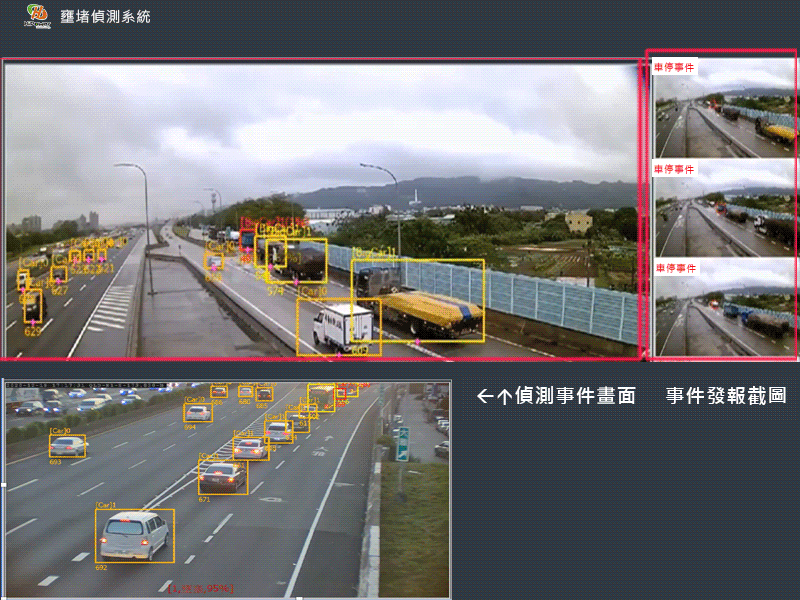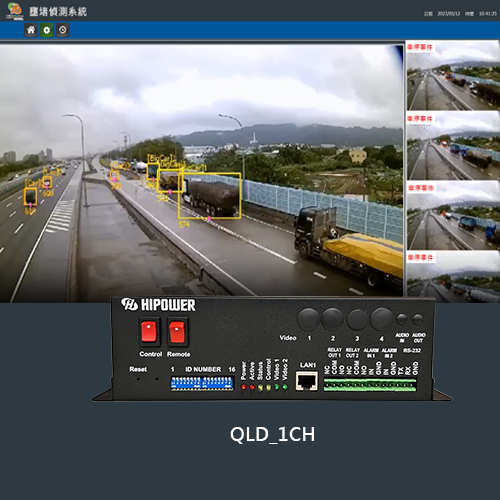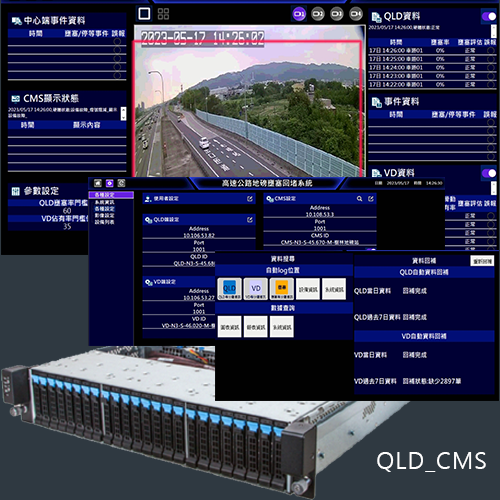Products

Hipower System
Queue Level Detection(QLD)
For dynamic traffic congestion information detection, collection, and management control applications for highways and external traffic intersections, it is applied to highway exit ramps, toll booth intersections, and main roads in tourist areas. It can also provide congestion detection and activate signal control on one-way controlled lanes.
The system equipment can be integrated with HIPOWER cameras (bullet/panoramic) or thermal cameras to accommodate various intersection layouts. It also pairs with the central system management platform, iCMs, to receive and manage data from multiple intersections.
The system equipment can be integrated with HIPOWER cameras (bullet/panoramic) or thermal cameras to accommodate various intersection layouts. It also pairs with the central system management platform, iCMs, to receive and manage data from multiple intersections.
Why choose QLDs?
The system equipment can receive generic camera video streams (RTSP) with a frame rate of 15fps or higher and a resolution of 720p or higher.
It supports the configuration of detecting traffic congestion levels in individual lanes at each intersection. It allows setting congestion points based on the area's vehicle occupancy rate per second, and it accumulates congestion points on a per-minute basis.
The system also supports the configuration to generate road congestion messages and export management functions when the accumulated congestion data reaches a certain threshold.
Additionally, it can detect vehicle waiting events when vehicles are seriously congested in the detection area and trigger an event after a specified delay.
The system's analytical capabilities include obtaining information such as the number of vehicles passing through the lane, vehicle types, and lane occupancy rates at the intersection.
It can perform real-time detection and statistics on a per-minute basis, with data logging and transmission.
Data can be transmitted in file format (.csv) every 1 to 5 minutes to the backend system.
It can display real-time images from cameras at the intersection.
The system can detect various types of vehicles, including motorcycles, cars, and large trucks, and can perform detection and recognition based on different vehicle types.
It utilizes object depth tracking to enhance the accuracy of primary vehicle object detection.
It can be integrated with the HIPOWER backend management system platform for remote personnel data management and query applications.
Data transmission: The system logs data locally and remotely manages settings. It supports urban 3.0 or high-speed 3.0 communication formats for transmission to the central data center.
The system equipment can be categorized into on-site monitoring for one lane detection and central monitoring for four or eight lanes, depending on the hardware specifications.
It can be integrated with the HiPower backend management system platform for remote data management, query applications, and system status monitoring and reporting.
The system provides HiPower's original technical support and offers online free remote system update services.
QLD detection and statistical data display:
QLD host stores log records for retrieval and query of detection statistics.
It can be paired with image-based manual occupancy rate comparison.
Congestion occupancy rates can be configured based on the detection lane range.
imely warnings to ensure area safety.
Detection Function
Vehicle Congestion Occupancy Rate (%)
Calculate the vehicle congestion occupancy rate in specific areas or sections, indicating the proportion of congested area in the entire road or section.
Traffic Status Detection
Detect the traffic status of a section, such as smooth, heavy traffic, or congested, and provide corresponding status categorizations.
Vehicle Wait Time
Detect the average waiting time for vehicles in congested or waiting areas to understand the level of traffic congestion.
Traffic Flow Quantity Statistics
Provide statistics on the quantity of traffic passing through specific sections or areas, offering counts of vehicles passing in each time period.
Identification of Passing Vehicle Types
Can identify different types of passing vehicles, such as small cars, large vehicles, or motorcycles.
Communication Transmission Management
Regularly transmit and update data information, such as updating congestion detection system-collected data every minute.
Queue Level Detection
QLD Systems
Queue Level Detection(QLD)>
Application Areas
Smart Traffic:In highway tunnels or major thoroughfares, deploy network cameras or thermal cameras for congestion detection.
Weighing Station Application
Highway Interchange
Tourist Area Intersection Monitoring
Queue Level Detection(QLD)
Application Actual Cases
Highway Events
Highway Events
Highway Events
Highway Events
Highway Events
Highway Events



